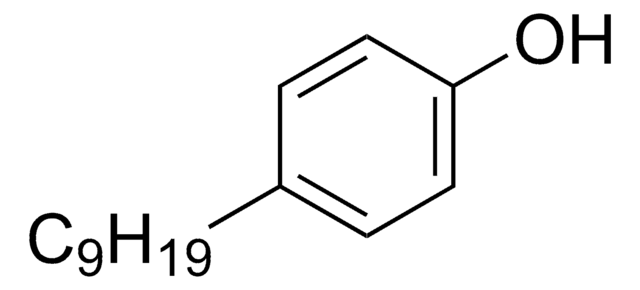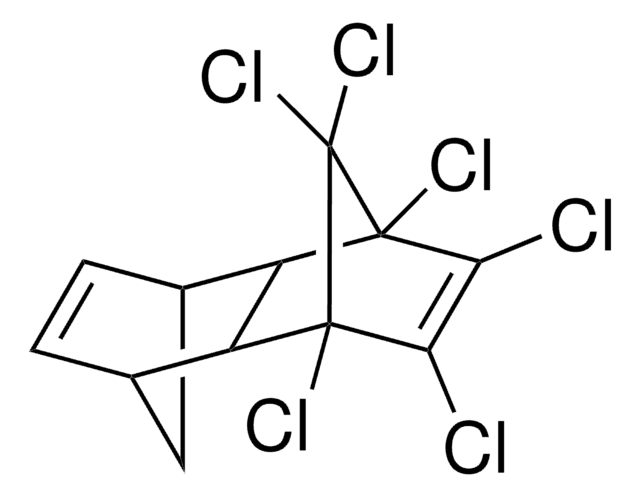32467
4-tert.-Octylphenol -Lösung
1000 μg/mL in acetone, analytical standard
Synonym(e):
4-(1,1,3,3-Tetramethyl-butyl)-phenol -Lösung
About This Item
Empfohlene Produkte
Qualität
analytical standard
Qualitätsniveau
Haltbarkeit
limited shelf life, expiry date on the label
Konzentration
1000 μg/mL in acetone
Methode(n)
HPLC: suitable
gas chromatography (GC): suitable
Anwendung(en)
environmental
Format
single component solution
Lagertemp.
−20°C
SMILES String
CC(C)(C)CC(C)(C)c1ccc(O)cc1
InChI
1S/C14H22O/c1-13(2,3)10-14(4,5)11-6-8-12(15)9-7-11/h6-9,15H,10H2,1-5H3
InChIKey
ISAVYTVYFVQUDY-UHFFFAOYSA-N
Suchen Sie nach ähnlichen Produkten? Aufrufen Leitfaden zum Produktvergleich
Allgemeine Beschreibung
Anwendung
- Human biological samples and water samples by stir bar sorptive extraction (SBSE) and thermal desorption–gas chromatography-mass spectrometry (TD-GC-MS) operating in the selected ion monitoring (SIM) mode of detection.
- Surface water samples by GC-MS with SIM detection.
Ähnliches Produkt
Signalwort
Danger
H-Sätze
Gefahreneinstufungen
Eye Irrit. 2 - Flam. Liq. 2 - STOT SE 3
Zielorgane
Central nervous system
Zusätzliche Gefahrenhinweise
Lagerklassenschlüssel
3 - Flammable liquids
WGK
WGK 2
Flammpunkt (°F)
1.4 °F - closed cup
Flammpunkt (°C)
-17.0 °C - closed cup
Zulassungslistungen
Zulassungslistungen werden hauptsächlich für chemische Produkte erstellt. Für nicht-chemische Produkte können hier nur begrenzte Angaben gemacht werden. Kein Eintrag bedeutet, dass keine der Komponenten gelistet ist. Es liegt in der Verantwortung des Benutzers, die sichere und legale Verwendung des Produkts zu gewährleisten.
EU REACH SVHC Candidate List
Hier finden Sie alle aktuellen Versionen:
Besitzen Sie dieses Produkt bereits?
In der Dokumentenbibliothek finden Sie die Dokumentation zu den Produkten, die Sie kürzlich erworben haben.
Unser Team von Wissenschaftlern verfügt über Erfahrung in allen Forschungsbereichen einschließlich Life Science, Materialwissenschaften, chemischer Synthese, Chromatographie, Analytik und vielen mehr..
Setzen Sie sich mit dem technischen Dienst in Verbindung.







